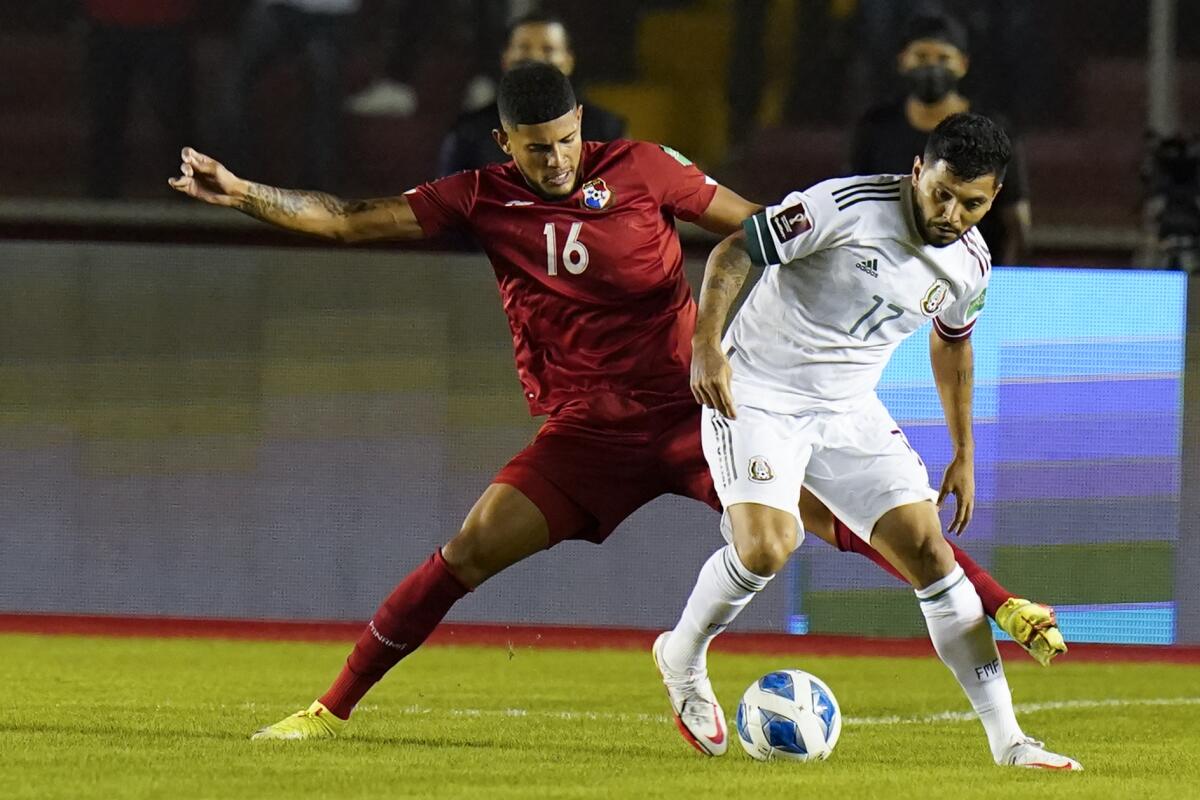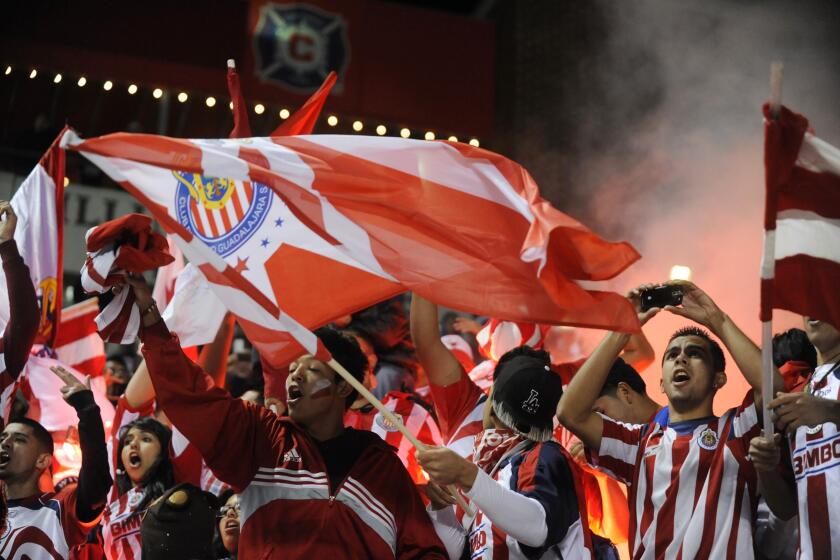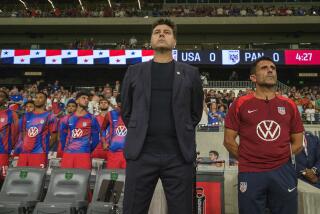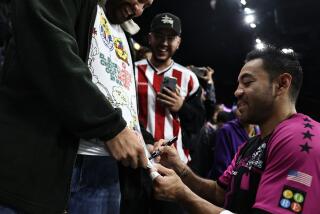Panama looking to build a valuable World Cup portfolio

- Share via
PANAMA CITY — When Panama qualified for its first World Cup four years ago, President Juan Carlos Varela declared a national holiday, canceling school classes while closing shops and businesses.
It was certainly a feat worth celebrating because simply getting invited to the biggest, most important sporting event on the planet can forever alter the trajectory of a national soccer program.
Even though Panama didn’t win a game in Russia, giving up a tournament-worst 11 goals in three losses, it earned $8 million from a $400-million purse for finishing last in the 32-team field. It got an additional $1.5 million from FIFA to prepare for the competition.
And that’s just the tip of what could be a very large financial iceberg.
Qualifying for a World Cup can lead to tens of millions of dollars in sponsorship and licensing deals in addition to the FIFA prize money. Millions more pour in through ticket and merchandise sales as well as broadcast rights.
World Cup qualification can also spur investment in grass-roots programs and inspire expanded participation on the youth level. That’s the reward eight countries are chasing in CONCACAF World Cup qualifying, which resumes Sunday with the unbeaten U.S. facing Panama in Panama City.
“This is why this is big for us,” said defender Kemar Lawrence of Jamaica, whose cash-strapped national team made its only World Cup appearance in 1998. “We understand that if we make it to the World Cup, it changes a lot of things. Not only for the team but for our country in general, which needs help right now.
“We’re not only playing for ourselves. We have a bunch of reasons why we have to make it to the World Cup.”
The same could be said for Canada and El Salvador, neither of which has made a World Cup this century.
“With the tournament taking place every four years, it can make or break a national team’s finances over the next cycle,” said Steven Bank, a professor of business law at UCLA and an authority on international soccer.
“Many assume that the prize money goes to the players when it actually goes to the federations. The amount of prize money that they keep rather than pay to the players as a bonus is often instrumental in the development of the sport in their countries at all levels.”
The financial implications aren’t quite as dire for teams from Europe and South America, where midcycle regional tournaments such as the European Championships and Copa América are hugely profitable. The 24 teams in last summer’s Euros received $10.7 million for showing up and the 10 teams that qualified for the Copa América received $4 million in preparation fees. Compare that with the $200,000 paid to the final 16 teams in the CONCACAF Gold Cup this year.
In recent years CONCACAF, the confederation that oversees soccer for 41 countries in North America, Central America and the Caribbean, has tried to increase financial opportunities for its smaller members by creating the Nations League tournament and expanding both the Gold Cup and World Cup qualifying events.
“A significant part of CONCACAF’s approach is to provide more competitive games for our member associations,” said Nicholas Noble, the confederation’s director of communications. “Panama’s participation in the 2018 World Cup clearly provided an important boost to their development and supported them in their efforts to again compete to reach the world’s biggest stage in 2022.”
Chivas of Guadalajara is the only Liga MX team limited to Mexican citizens, but the policy has recently cost the team in the league standings.
Spent wisely, that financial support can help national federations build a solid foundation for future success. Over time, that can become self-perpetuating.
Take the case of Costa Rica, which played in one World Cup between 1958 and 1998. Qualifying for the 2002 tournament in Asia — and a $2.7-million participation trophy — started a run that saw Costa Rica play in four of the last five quadrennial tournaments.
There were other factors involved. The field expanded by eight teams, to 32, in 1998, making it easier to qualify. It will expand again, to 48, in 2026. The additional funds the Costa Rican federation was able to invest in soccer, plus the increased sponsorship opportunities and the grass-roots growth of the sport inspired by playing in the World Cup, were also important.
Panama might be poised to make a similar run. It is fourth in the standings, one point behind Canada and three behind the U.S., heading into Sunday’s game at Estadio Rommel Fernández. The day will again be a holiday of sorts since the game is being played on the fourth anniversary of Panama’s 2-1 win over Costa Rica in the same stadium, a result that, combined with a 2-1 U.S. loss in Trinidad and Tobago, sent Panama on to its first World Cup.
To return to the tournament next year in Qatar, Panama (1-1-2) will have to finish in the top three of the eight-team, 14-game qualifying tournament, or place fourth, then win a two-game inter-confederation playoff next year.
Panama lost its last game, falling 1-0 in El Salvador during a heavy rain, although it is unbeaten at home, having played to draws with Costa Rica and Mexico last month. Storms are again forecast for Sunday.
The U.S. (2-0-2), meanwhile, is coming off a 2-0 win over Jamaica that ran its unbeaten streak to 13 games. And it has never lost in Panama. However, the Americans will be without three of their best players in Christian Pulisic, Gio Reyna and Weston McKennie, who are all out with injuries.
“Panama is going to come out shooting for us because they are at home and they’re not going to want to take that loss,” said forward Tim Weah, who is likely to see playing time in place of Pulisic and Reyna. “We’ve got to be prepared for whatever they bring at us. We just want to get out there and get the job done and move on to the next [game].”









